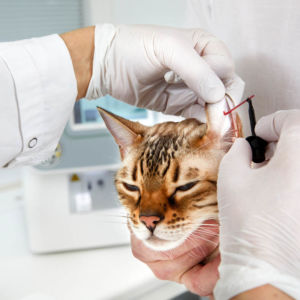A common issue when analyzing platelets is the merging of the PLT peak with the RBC peak,
obscuring the valley in between these peaks. This issue can have several reasons, such as variability
in PLT size, activation and aggregation of platelets, and the presence of RBC fragments or
microcytic RBCs.
Platelet size and variability differs between animal species, for instance, cats have larger PLTs with
a greater variability in size (MPV 11–18.1 fL) as compared to dogs, pigs, and humans (MPV 7.6–8.3 fL)
(1). For cats, it is therefore a greater risk that the natural variation in size in between PLTs and RBCs
overlaps.
Aggregated platelets
Aggregation of PLTs is a major source of errors in the PLT count. The aggregation is a result of
the reactive nature of PLTs, which can be stimulated to aggregate by a variety of factors such
as adenosine diphosphate (ADP) and serotonin (excreted from the PLTs themselves), adrenalin,
vasopressin, collagen, and thrombin (1, 2). One theory for why PLTs from some animals, such as cats,
are more prone to aggregation than others is their larger size (therefore containing and releasing
more ADP and serotonin) and their sensitivity to stress-related substances such as adrenalin and
vasopressin (1).
If there is a high degree of PLT aggregation in the sample, this will lead to less single PLTs and
therefor a false low count, also called pseudo-thrombocytopenia.
Pseudo-thrombocytopenia can also be EDTA-induced. This is an in vitro phenomenon caused by
anti-PLT antibodies from the patient binding to EDTA-activated epitopes on the PLT (3).
PLT count
Aggregated platelets pose a problem both for automated and manual PLT count. For impedance technology, where the different cell types are discriminated by size, PLT aggregates can have the same size as RBCs and therefore causing the two peaks to merge.
If this happens, an instrument with a floating discriminator will not be able to find the minima between the peaks and the count is instead based on the beforehand set fallback discriminator of the hematology system, much like a fixed discriminator. It is therefore of great importance to understand the variability of PLTs and how these are distributed in the histogram so that the desired discriminator can be set accordingly (Fig 1). Furthermore, severe aggregation can also give effects on the WBCcount, as the PLT aggregates could potentially be mis-interpreted as lymphocytes (2).
Since automated count using optical technology do not only discriminate by size, the two populations will not merge in the same way. However, even these systems have a difficulty reading PLT aggregates as these have a different complexity than single PLTs and therefore a different scatter (1, 2). As the
scatter of PLT aggregates line up very close to the granulocytes (NEU, EOS, BASO), this may lead to a false elevation of these cells (4).
Since the aggregation results in an uneven distribution of PLTs, even manual count is affected. However, the manual smear should always be performed to confirm the presence of aggregates, especially if the PLT count from the automatic hematology system is unexpectedly low.







